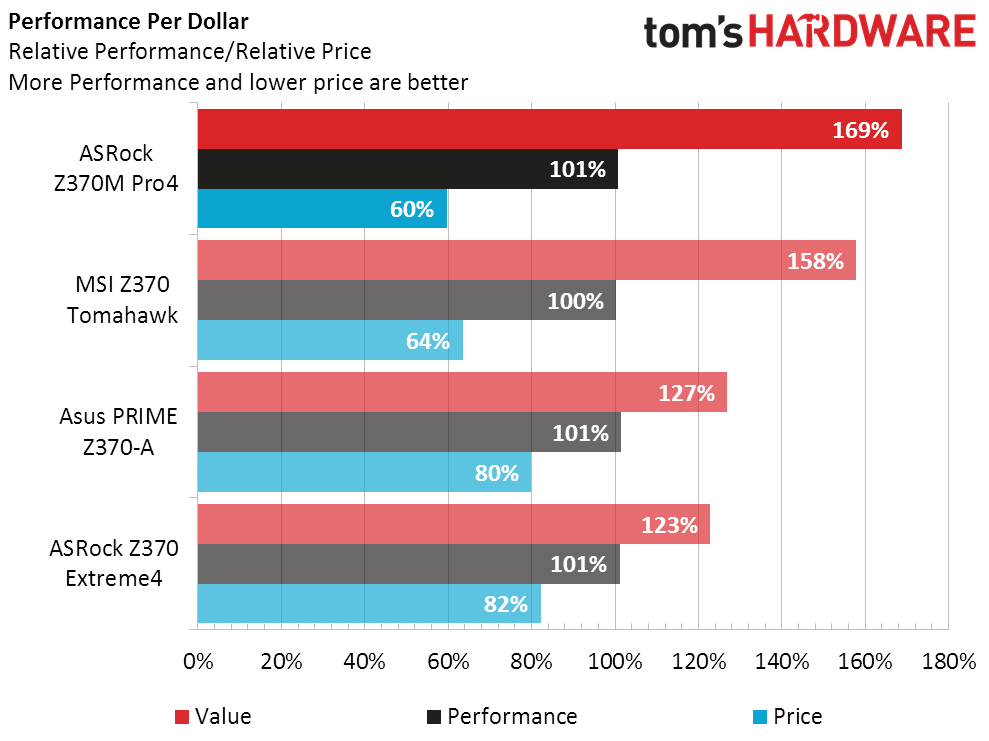ASRock Z370M Pro4 Review: A Z370 Value?
Why you can trust Tom's Hardware
Benchmark Results & Final Analysis
Since we’re using the same hardware on all boards, cheating is the only way to get a big performance advantage. Improper configurations are the primary cause for performance deficits. Nearly every manufacturer cheats in the same ways today, using higher-than-stock TDP (thermal design power) limits to avoid power throttling and “Enhanced” Intel Turbo Boost ratios to lock in the highest frequency spec, even though the processor is designed to boost less under heavy loads. We disabled these manufacturer-applied enhancements during our performance benchmarks and power tests, so that the only noticeable differences between brands are generally limited to memory performance.
Synthetic Benchmarks
A “perfect” benchmark set would be completely boring, and synthetics are the best way to identify how any specific component is deviating from that norm.

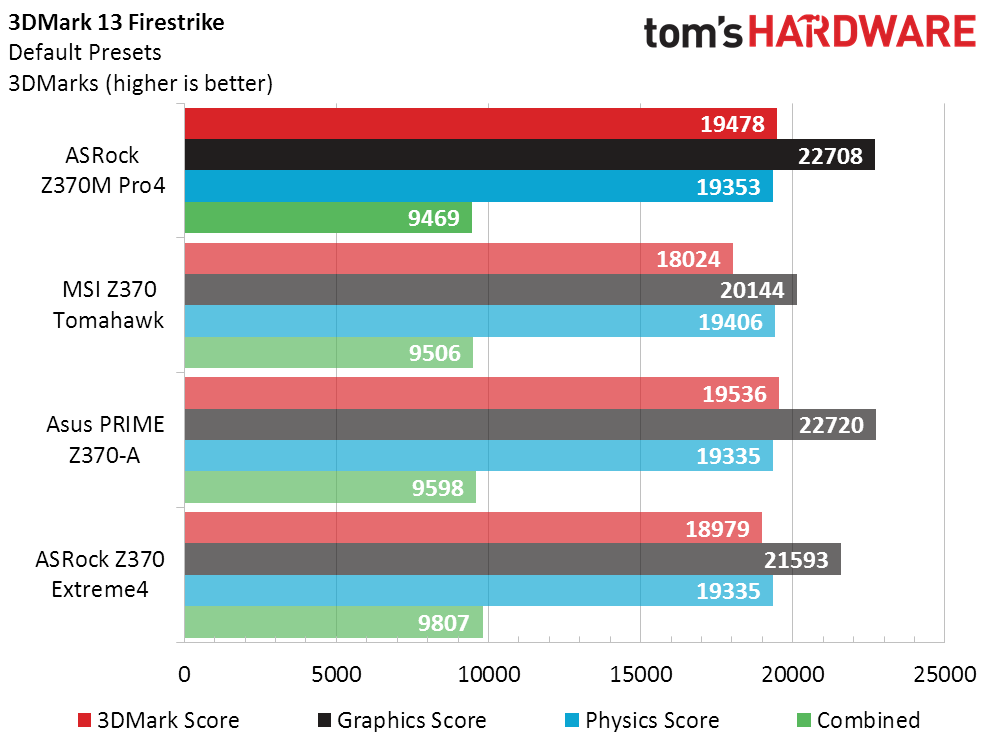
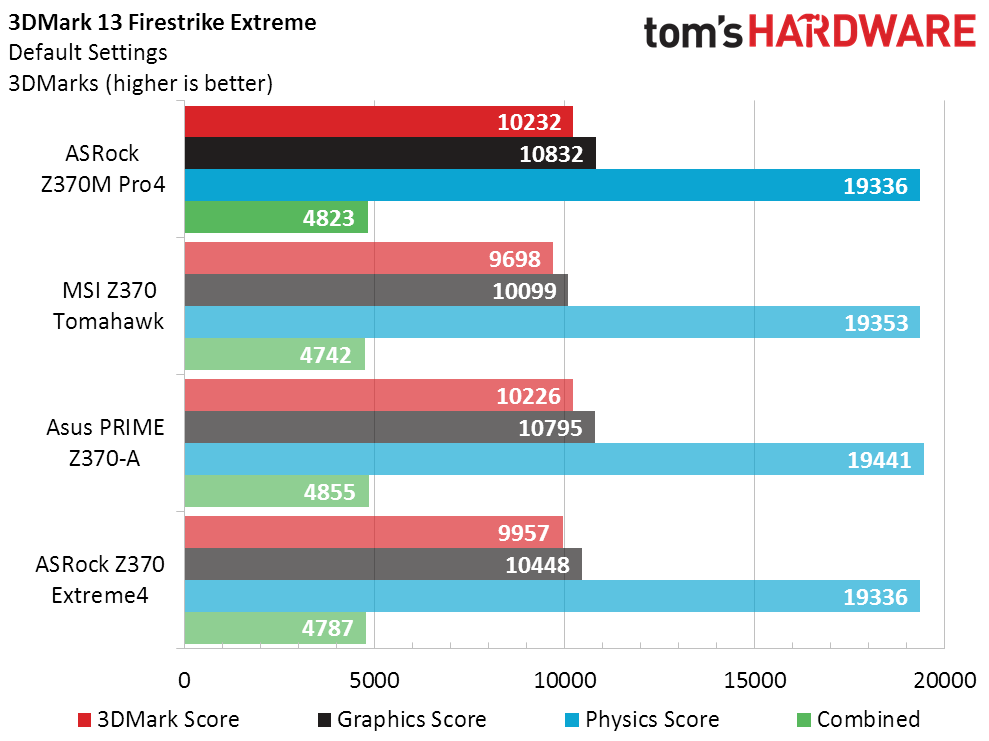
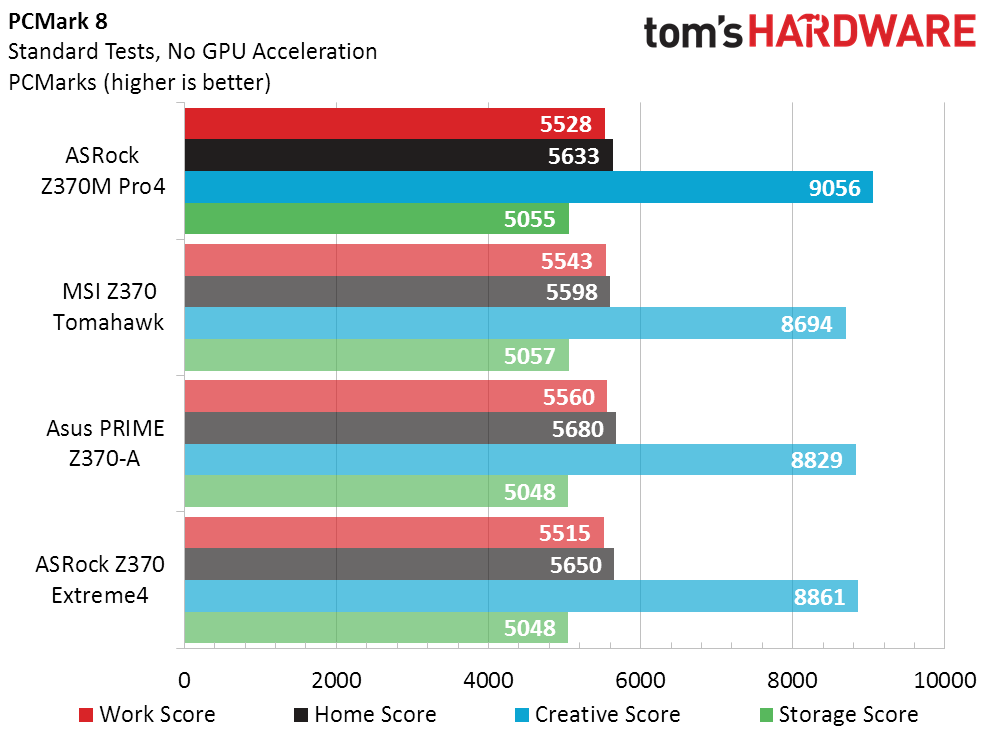
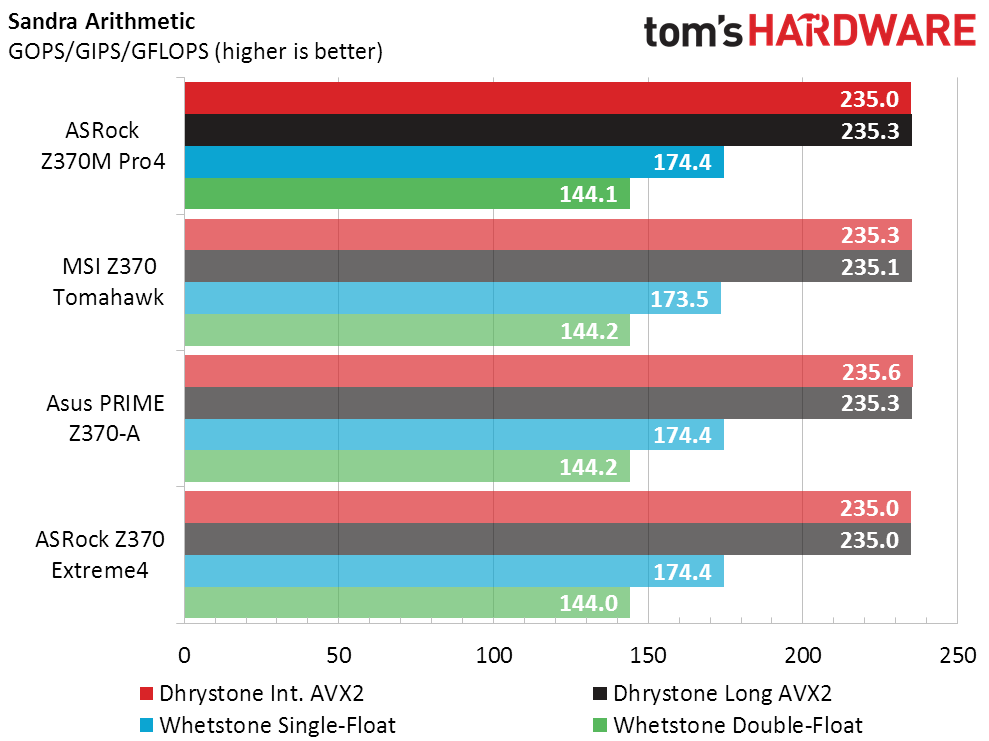


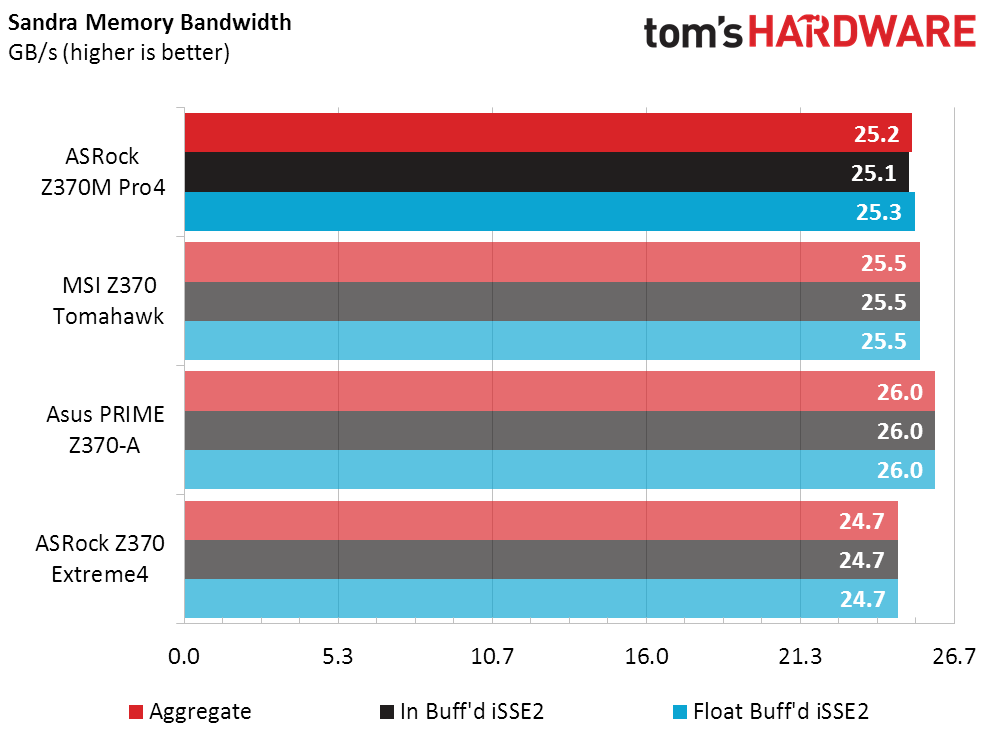
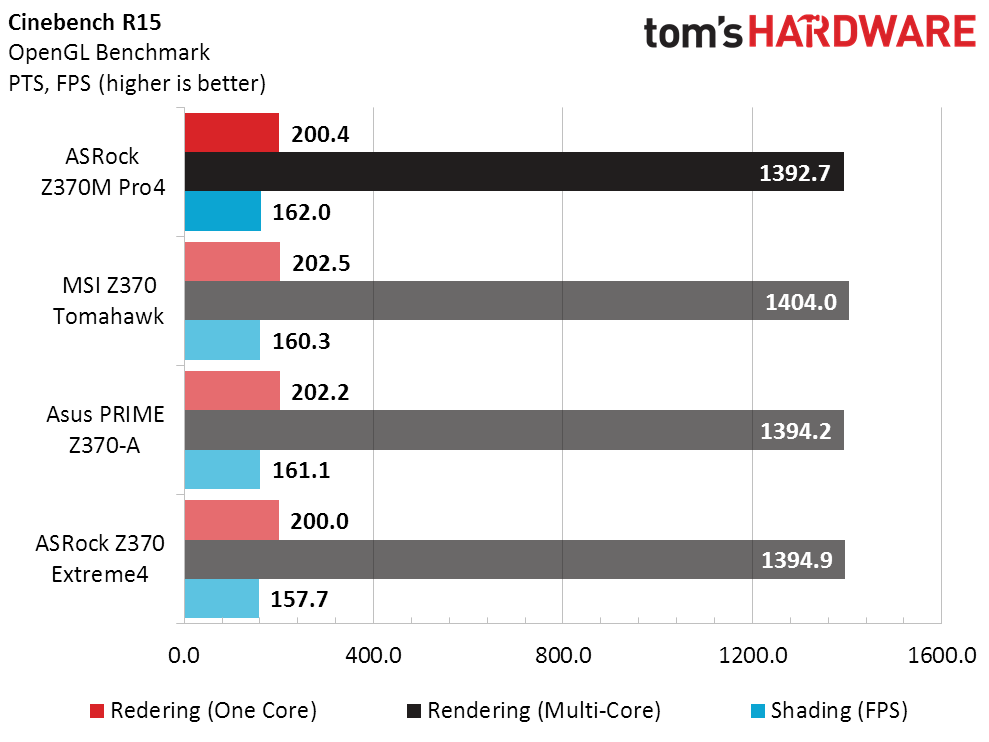
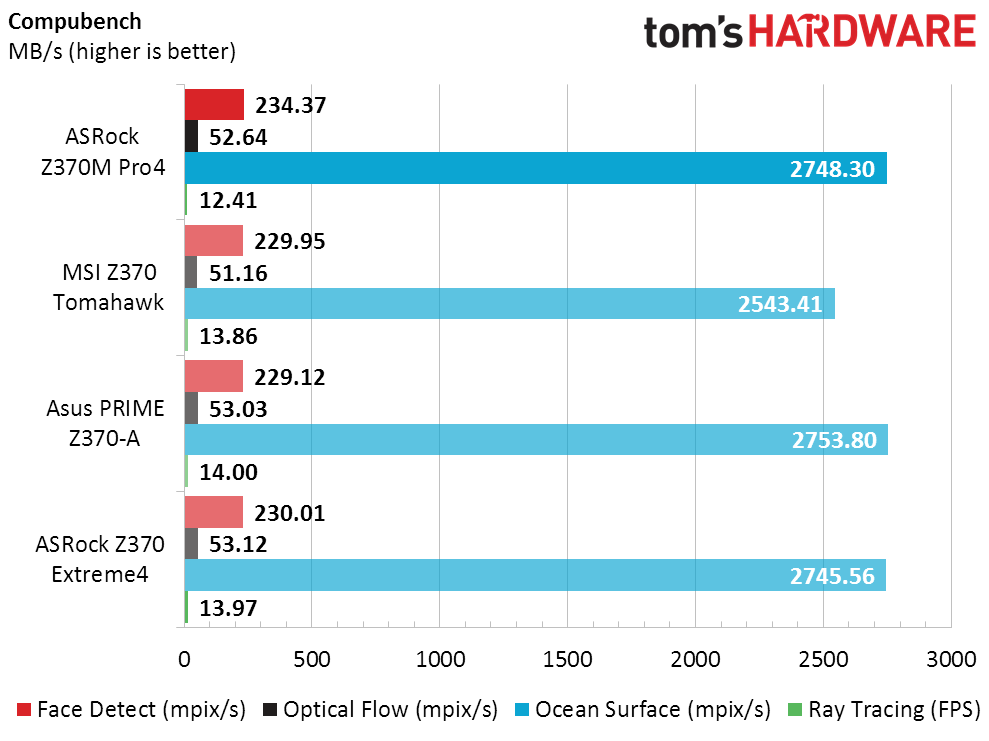
The stand-out performer in our synthetic test was Asus’ costlier Prime Z370-A; the places it stood out best were Sandra Cryptography and Sandra Memory Bandwidth. Bandwidth affects Cryptography scores, and the Prime Z370-A appeared to use tighter advanced memory settings to boost both.
3D Games
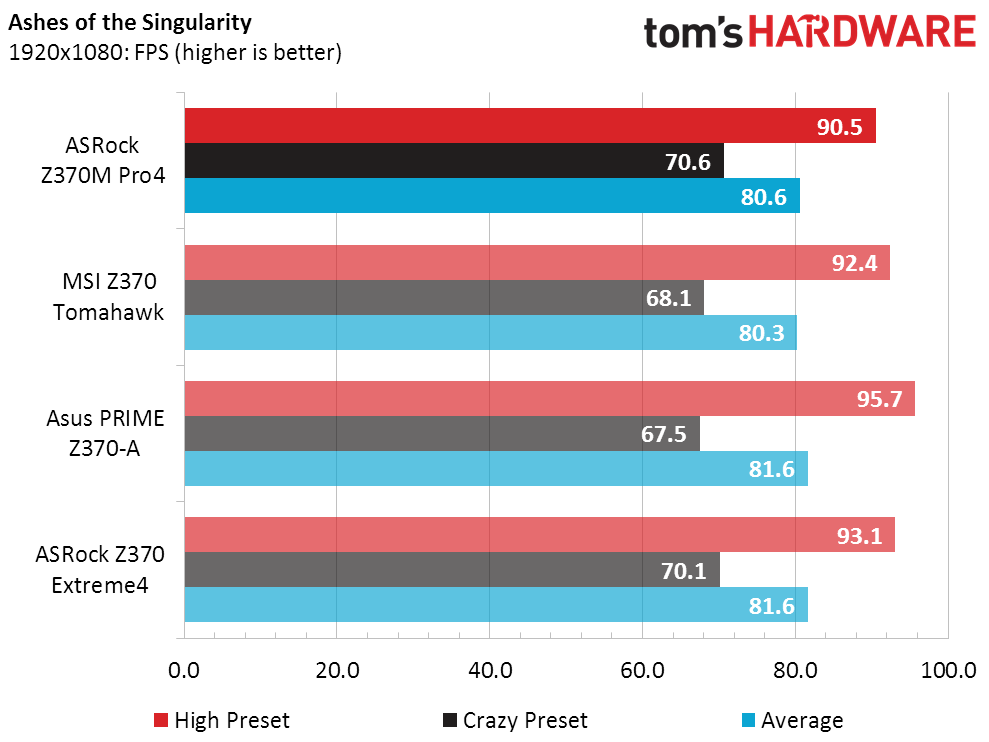
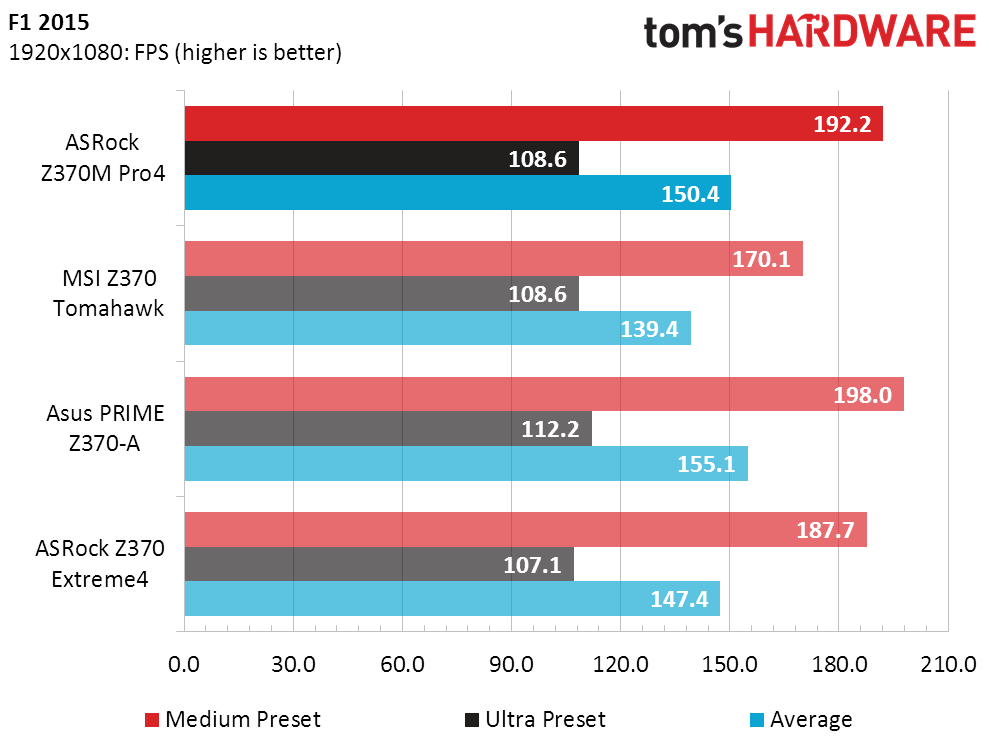
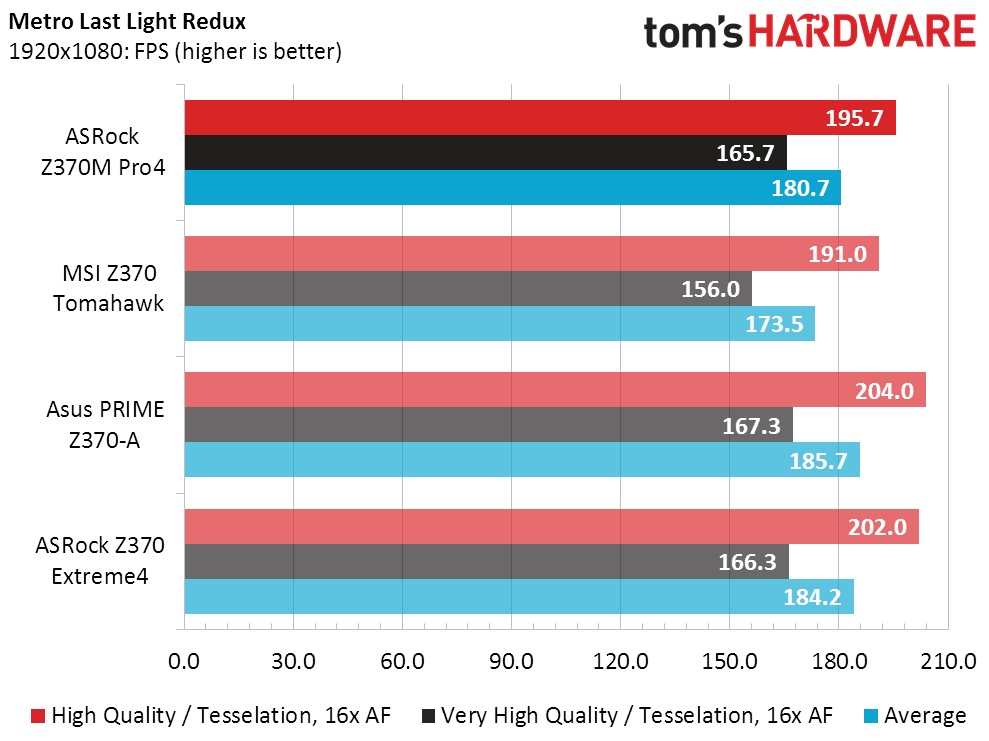
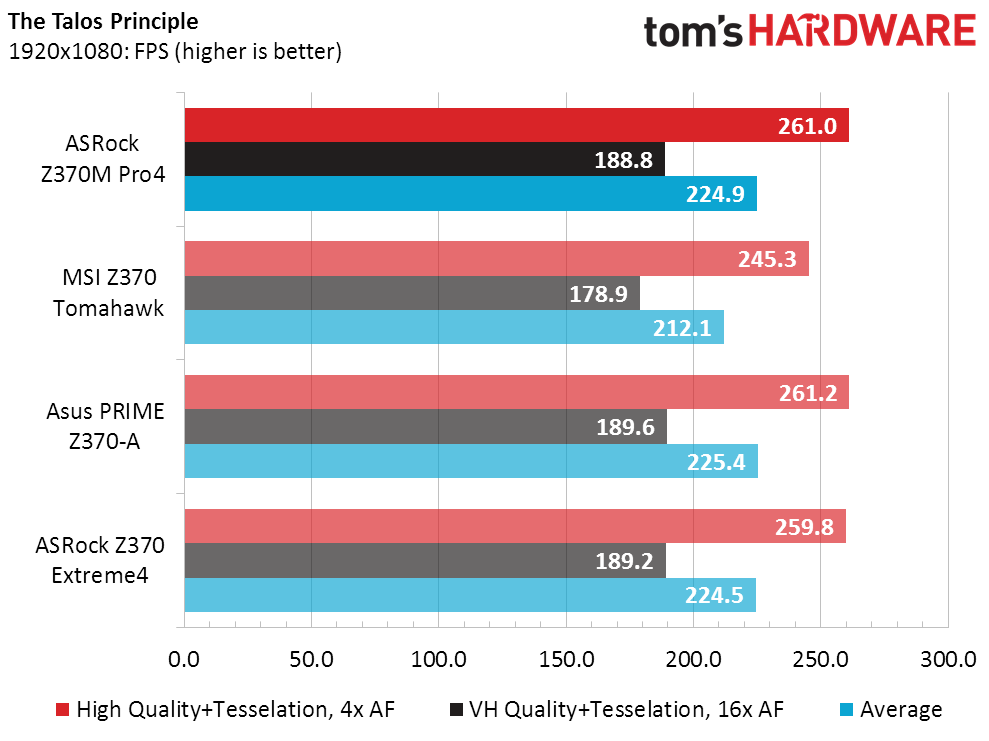
The Z370M Pro4 bounced back and forth between second and third place throughout our gaming tests, which makes this cheaper board look like a great deal to performance bargain hunters.
Timed Applications
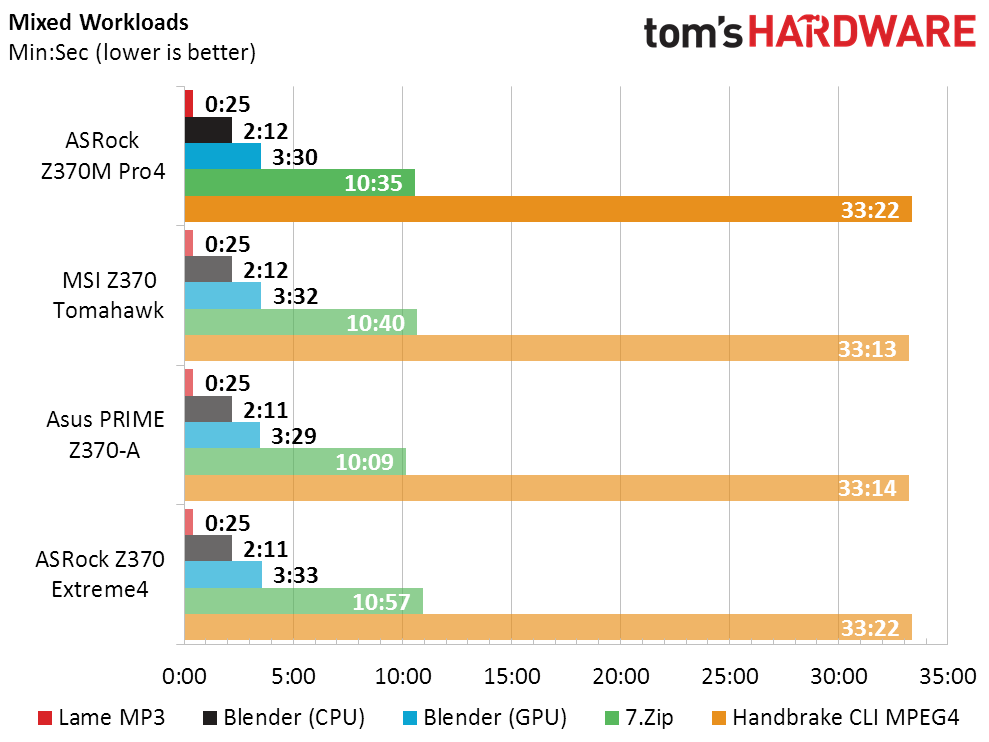
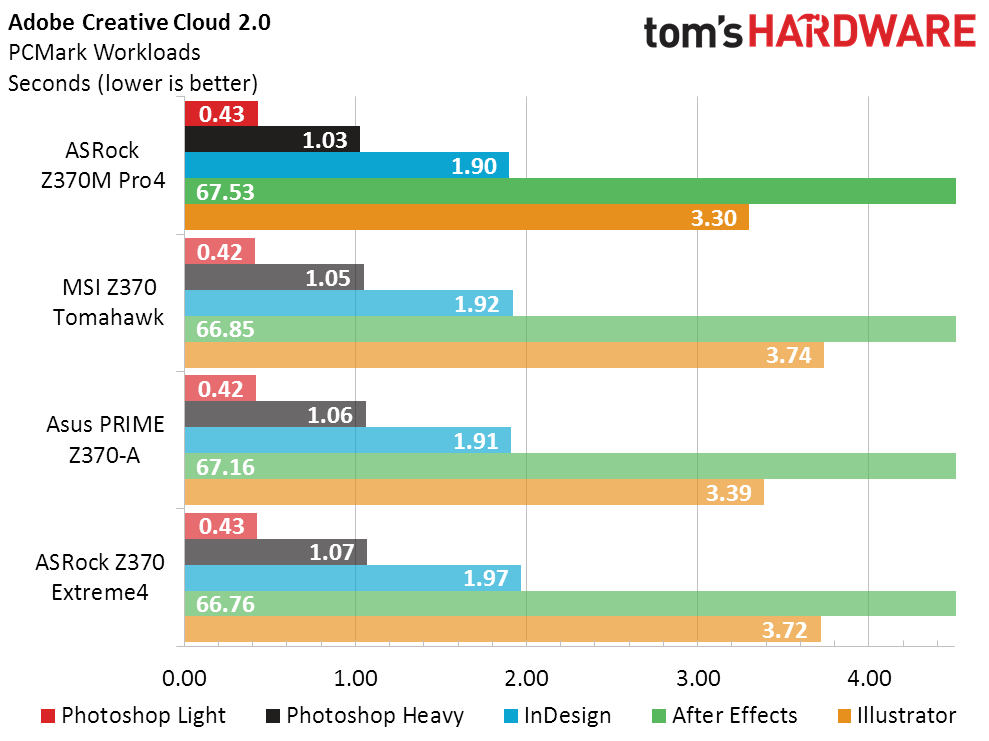
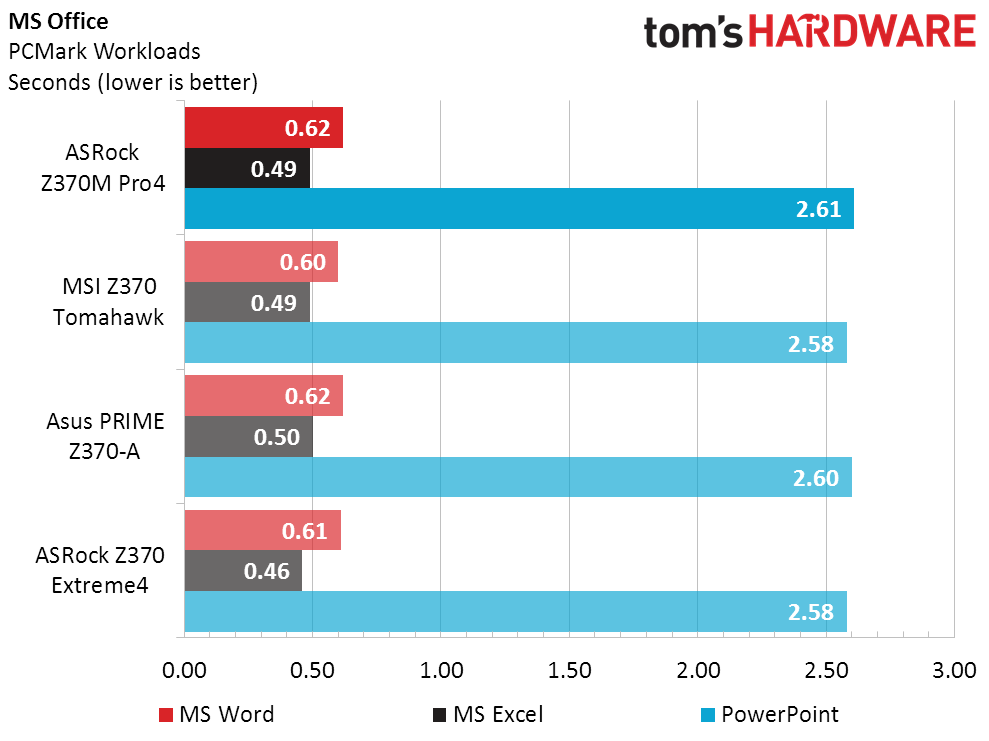
Less time means more performance when you’re waiting for a task to finish, and the Z370M Pro4 swung from first to last place across several benchmarks; however, the margin of victory in these benchmarks is too narrow for almost anyone to notice.
Power, Heat & Efficiency
The Z370M Pro4’s true weakness was revealed in our power test, where we weren’t able to run it longer than 20 minutes at stock settings before the board tripped its voltage-regulator thermal throttling trigger. That means the temperatures shown aren’t final, though the power numbers should be extremely close to their peaks.
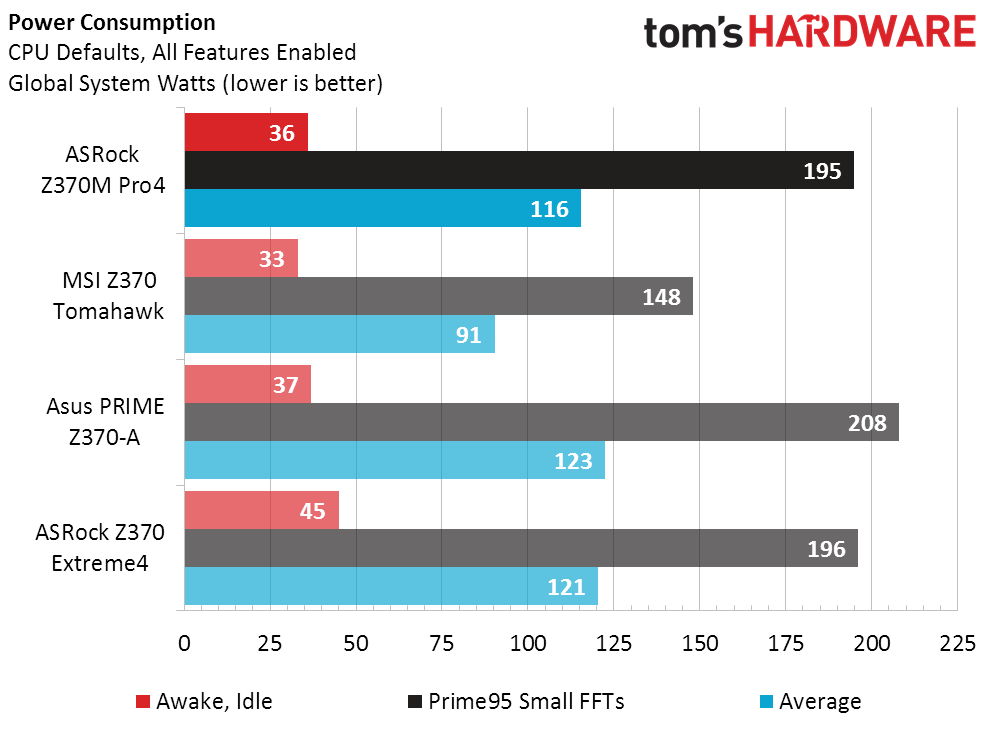


MSI’s Z370 Tomahawk spoiled our efficiency chart by holding the CPU closer to Intel’s factory TDP spec than its competitors. We could have gotten similar numbers on the Z370M Pro4 by simply reporting the power reading when it ran in limp-along mode at roughly 70% duty-cycle after thermal throttling kicked in, but that type of intentional concession seems even less fair.
Get Tom's Hardware's best news and in-depth reviews, straight to your inbox.
Overclocking
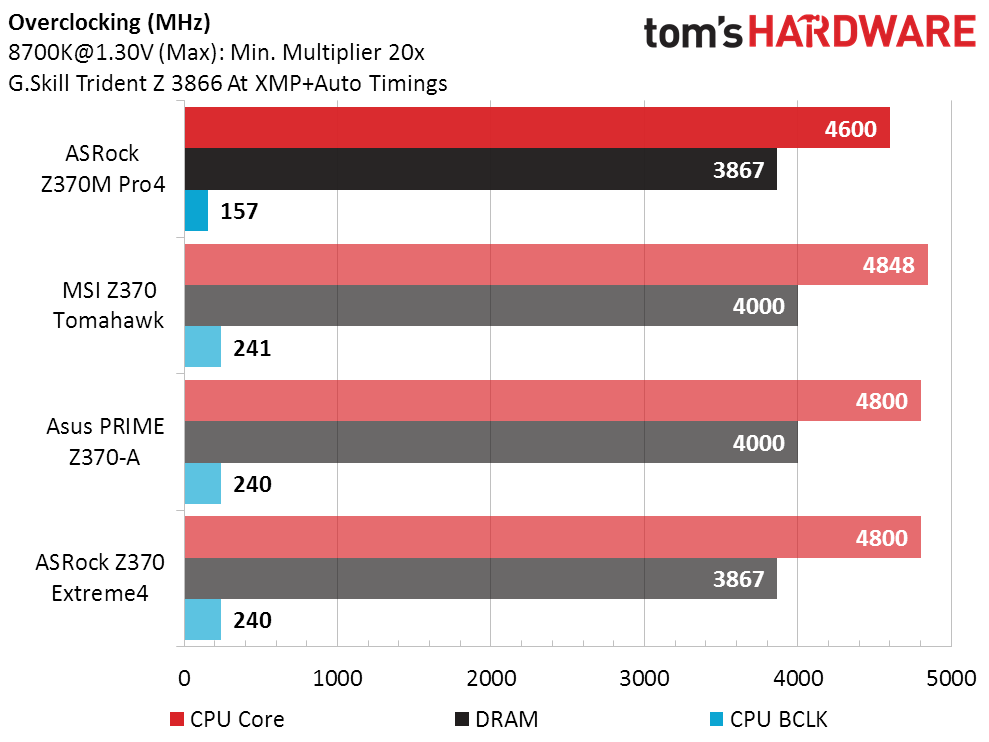
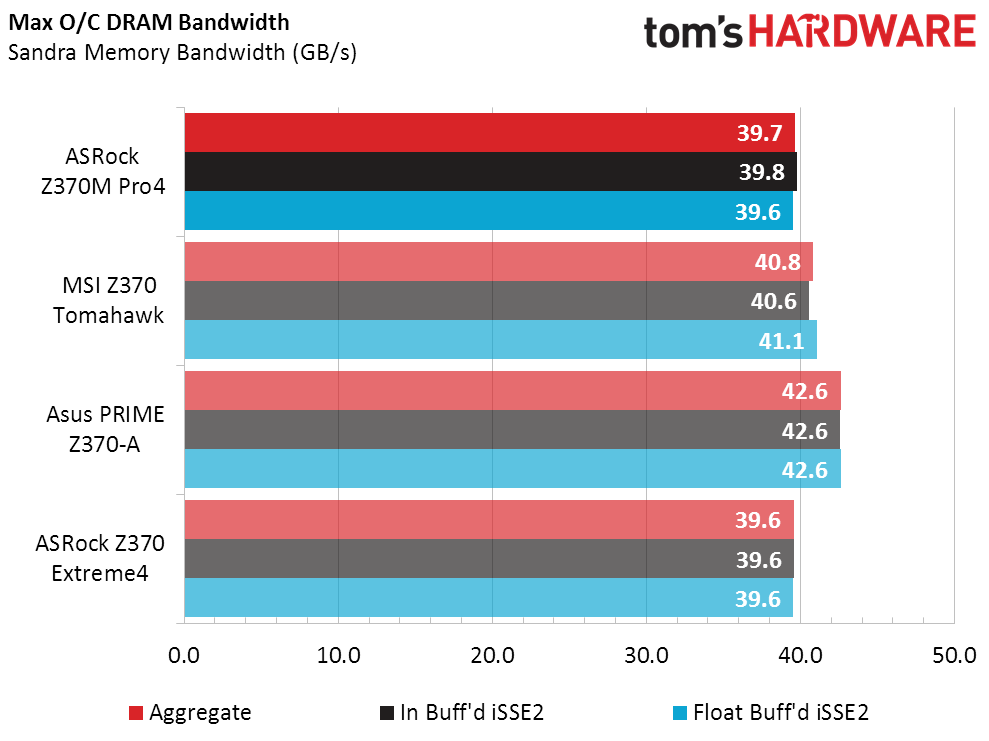
The Z370M Pro4 reached only 4.6GHz, and we even had to add an extra fan over the voltage regulator to get that frequency since it was hitting the voltage regulator’s throttle point even while testing at stock settings. Meanwhile, the MSI Z370 Tomahawk pushed our CPU past its 4.80GHz overclocking norm to 4.84GHz. And while that doesn’t sound like much of an accomplishment, any gain here is hard-won.
Final Analysis
Budget buyers will want to see a chart that proves that they’re getting more than their money’s worth with the cheapest board, and that’s easy to show when considering only the price and performance.
Unfortunately, those types of comparisons don’t count features or overclocking. Even the second-cheapest board, MSI’s Z370 Tomahawk, adds a USB 3.1 Gen 2 controller. And all the boards above that allow CPU PCIe bifurcation, boosting the second slot to eight lanes by knocking the first slot down to eight lanes. That advancement in turn allowed the Asus Prime Z370-A and AsRock Z370 Extreme4 to get SLI licenses, and users could alternatively put CPU-connected storage into those slots, even adding a pair of NVMe drives via an x8 slot adapter. But those expensive configuration options miss the point of the Z370M Pro4, which is to be the least-expensive Z370 option.
The biggest problem for the Z370M Pro4 is that it wouldn’t allow us to run extended Prime95 power tests on our Core i7-8700K, even at stock settings. Of course, it should support great overclocking on a lesser processor, and the most appropriate model for that would probably be the Core i3-8350K. Yet, that processor wastes the chipset’s ability to support memory beyond DDR4-2666. Then again, base clock overclocking could push DDR4-3600 out of the 8350K’s DDR4-2400 limit.
That kind of give and take limits our recommendation of the Z370M Pro4 to owners of the Core i3-8350K, since power limits seem too restrictive for higher, unlocked CPU models. Anyone not overclocking could instead take advantage of the H370 chipset's integrated USB 3.1 Gen 2 capability, and anyone wanting to overclock a better processor should be looking for a better board.
MORE: Best Motherboards
MORE: How To Choose A Motherboard
MORE: All Motherboard Content
-
Lutfij Is it possible that the lack of a thermal solution atop the top row of power phases as well as ample heatsink height on the power delivery between the socket and the rear I/O is the reason for thermal throttling or is it due to the lack of good quality VRM's?Reply -
Crashman Reply
It appears to be a problem of an inadequate cooling solution. Perhaps the engineers thought everyone would use a downdraft cooler or a lower-model processor...21289531 said:Is it possible that the lack of a thermal solution atop the top row of power phases as well as ample heatsink height on the power delivery between the socket and the rear I/O is the reason for thermal throttling or is it due to the lack of good quality VRM's?
-
Co BIY Would this board be able to power the i5-8400 or the i5-8600k without throttling ?Reply
Does the H370 version of this board have the same power delivery hardware? Does that limit it's ability to run the i7 or i5s at stock clocks?
I think TH neglects the i5-8600k despite it appearing to be the enthusiasts performance/value sweet spot (on the intel side at least). -
Crashman Reply
I only have the 8700k and 8350k21290644 said:Would this board be able to power the i5-8400 or the i5-8600k without throttling ?
Does the H370 version of this board have the same power delivery hardware? Does that limit it's ability to run the i7 or i5s at stock clocks?
I think TH neglects the i5-8600k despite it appearing to be the enthusiasts performance/value sweet spot (on the intel side at least).
